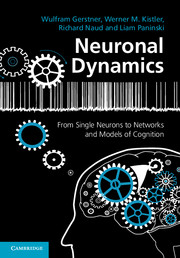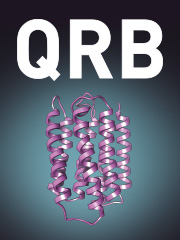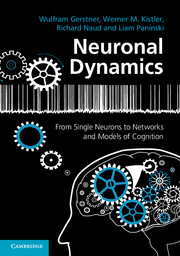Spiking Neuron Models
This introduction to spiking neurons can be used in advanced-level courses in computational neuroscience, theoretical biology, neural modeling, biophysics, or neural networks. It focuses on phenomenological approaches rather than detailed models in order to provide the reader with a conceptual framework. The authors formulate the theoretical concepts clearly without many mathematical details. While the book contains standard material for courses in computational neuroscience, neural modeling, or neural networks, it also provides an entry to current research. No prior knowledge beyond undergraduate mathematics is required.
- Modern approach takes the student to current research
- No unnecessary advanced mathematics, so suited for a broad audience
- Lots of illustrations and examples
Reviews & endorsements
'The treatment undoubtedly holds pointers to future developments that will allow robots to come closer to their biological prototypes.' Journal of Robotica
Product details
February 2005Adobe eBook Reader
9780511075063
0 pages
0kg
This ISBN is for an eBook version which is distributed on our behalf by a third party.
Table of Contents
- 1. Introduction
- Part I. Single Neuron Models:
- 2. Detailed neuron models
- 3. Two-dimensional neuron models
- 4. Formal spiking neuron models
- 5. Noise in spiking neuron models
- Part II. Population Models:
- 6. Population equations
- 7. Signal transmission and neuronal coding
- 8. Oscillations and synchrony
- 9. Spatially structured networks
- Part III. Models of Synaptic Plasticity:
- 10. Hebbian models
- 11. Learning equations
- 12. Plasticity and coding
- Bibliography
- Index.






